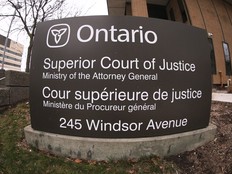AGAR: Safer supply for drug addicts is not the road to rehabilitation

Article content
When dealing with drug addicts, what is the goal? Shouldn’t it be to get people back to a healthy lifestyle?
Apparently not.
In Toronto, drop-in centres say they are seeing a “staggering” increase in overdoses since four “safe injection” sites closed on April 1.
I am sure the people running the drop-in centres have their hearts in the right place and are trying to do good work, but if they see more people at their facilities after a so-called safe injection site closes, isn’t that just a shift in location for the overdoses, not necessarily a rise in the number of incidents?
What are the facts? Has it gotten worse?
The city collects those facts and posts them.
“In May of 2025, there were 196 non-fatal and 14 fatal calls attended by paramedic services for suspected opioid overdoses. The number of fatal calls in May 2025 was lower than the average number of monthly fatal calls attended during the period of COVID 19 between April 2020 and May 2023, which was 25. The average number of monthly fatal calls attended up to March 2020, before the declaration of the emergency, was 13, which is similar to May 2025.
The number of fatal, suspected opioid overdose calls in May 2025 was also lower compared to the monthly average of 19 fatal calls attended by paramedics in 2024 and lower compared to May of 2024.”
So, not worse. Activists were and still are wrong.
Some also sympathize with the distress some addicts have over the apparent problem people are having accessing their drug needs.
We don’t treat obesity by supplying access to cheeseburgers and cake.
We don’t treat alcoholism with a gift card to the LCBO.
We don’t give people free cigarettes.
How did facilitating drugs become a thing?
Is it about really saving people from a destructive lifestyle or is it about facilitating jobs for people who then go about claiming they save lives?
There is also plenty of evidence now that the partner of safe injection — safe supply — is destructive to society in general.
Adam Zivo, executive director of the Centre For Responsible Drug Policy, wrote in the National Post, “A Vancouver-based study suggests that many ‘safer supply’ patients are diverting their taxpayer-funded opioids to the black market and are possibly being dishonest to researchers about defrauding the system. Worse yet, it appears that safer supply may not be as effective at separating addicts from street drugs as advocates claim.”
What happens to black market safer supply? There is evidence it is purchased as an entry into the drug market by young people who have been told by the government and those who run the clinics that it is safe.
That is their introduction to drugs, while the hardcore addict is using the money from the sale of the so-called safer drug to buy the harder supply they crave.
In the B.C. study, 84% of addicts who were supposed to be using the safe supply tested positive for fentanyl and 72% for amphetamines.
It may be that there is some success with the injection sites and the supply of needles and drugs. But none of that bends toward getting addicts clean and sober, which seems to me to be the caring thing to do.











Postmedia is committed to maintaining a lively but civil forum for discussion. Please keep comments relevant and respectful. Comments may take up to an hour to appear on the site. You will receive an email if there is a reply to your comment, an update to a thread you follow or if a user you follow comments. Visit our Community Guidelines for more information.